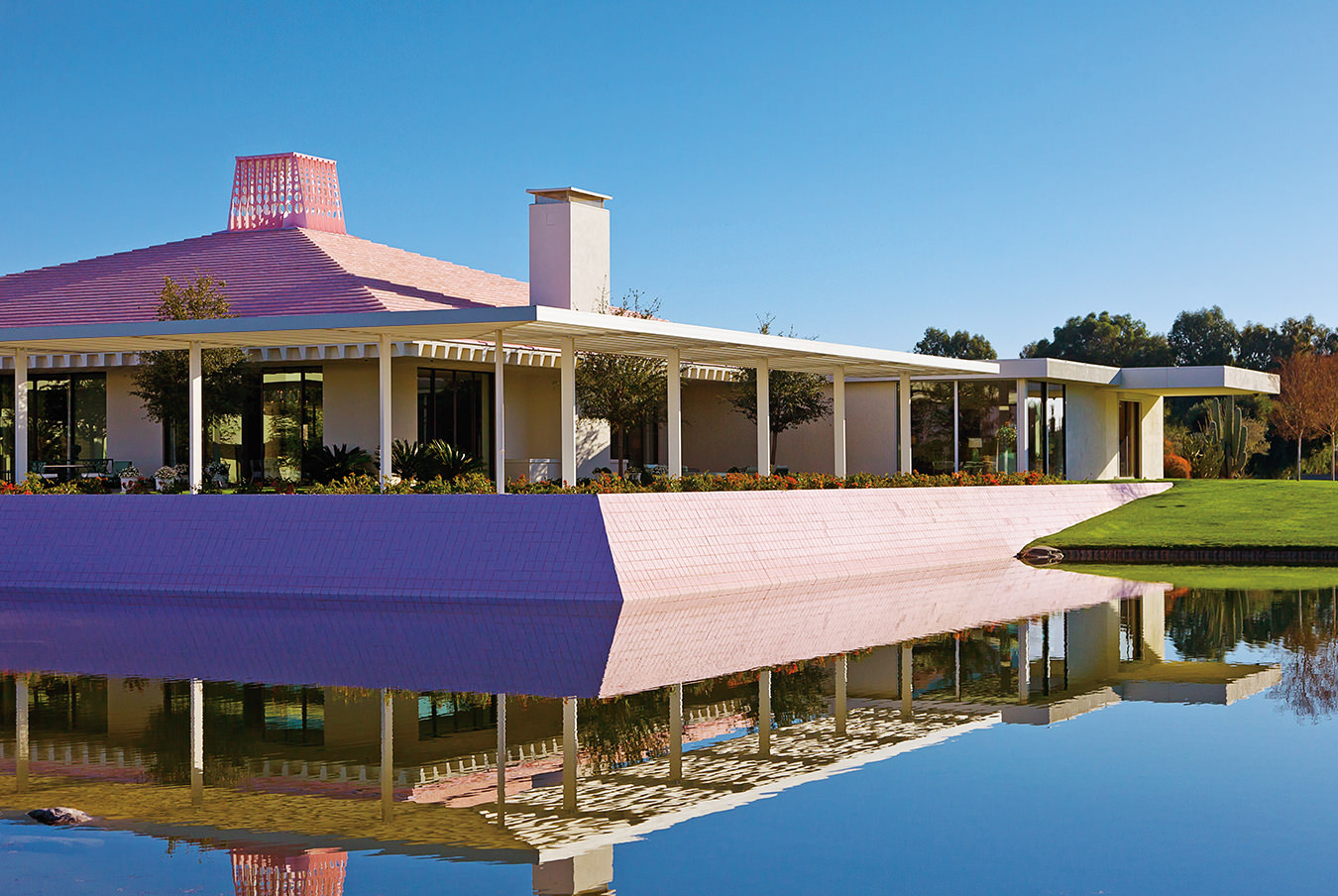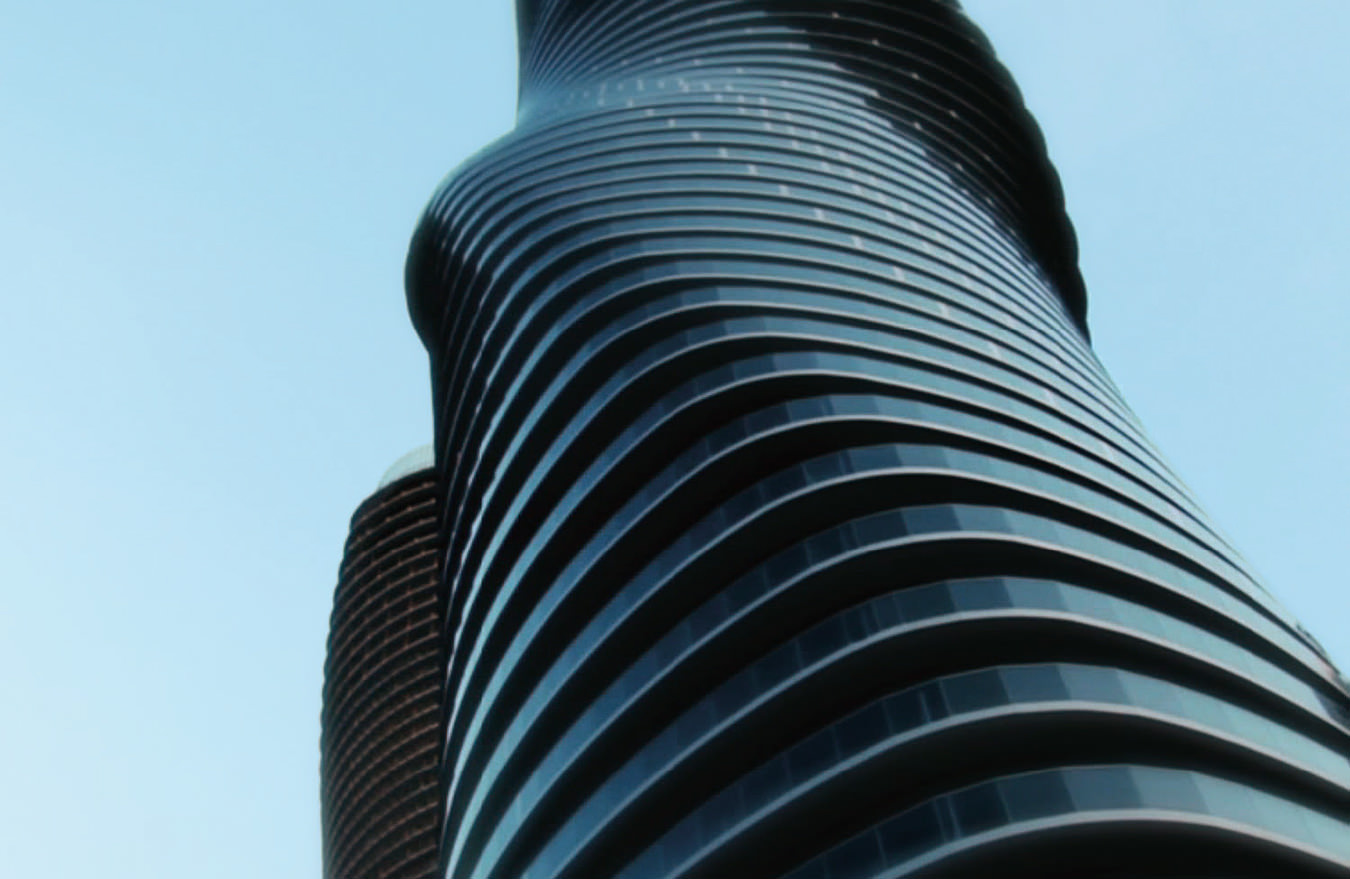Architect Pierre Thibault on Sharing, Contemplative Retreats, and Giving Back
Strong foundation, open mind.

The architect Pierre Thibault. Photography by Hélène Bouffard.
About 100 kilometres outside of Montreal, just off Highway 122, Saint-Edmond-de-Grantham is the last place one would expect Quebec’s newest contemporary art institution to build its headquarters. The town, population 768, is removed from Quebec’s traditional artistic hubs. Yet the Grantham Foundation for the Arts and the Environment’s relative isolation is also its most unique quality: nestled in the woods, overlooking a meandering river, the new building by Atelier Pierre Thibault provides the perfect setting for artists to retreat and recentre their practice in serenity.
Pierre Thibault is an architect, educator, and artist who runs an eponymous Quebec City–headquartered practice responsible for the foundation’s design. I first met him as an architecture student over a decade ago when I began my own studies. A soft-spoken yet passionate man, his abiding interest in architecture is its role in human connection. “The most joyful moments of my life have been moments of shared connection,” the architect says. “Spaces have this power to facilitate shared moments—it’s a very important role for architecture.”
These values are, in a way, what led the studio to its latest commission. After completing a home nearly 20 years ago for a local couple, the architect continued to maintain a relationship with the owners. They are avid art collectors, and as their collection grew, so did their relationship with Thibault. After years of visits to the home, conversations with the owners, and shared moments in the space Thibault designed, they decided, unsurprisingly, to collaborate with him on their latest project: an arts foundation based in their home town.
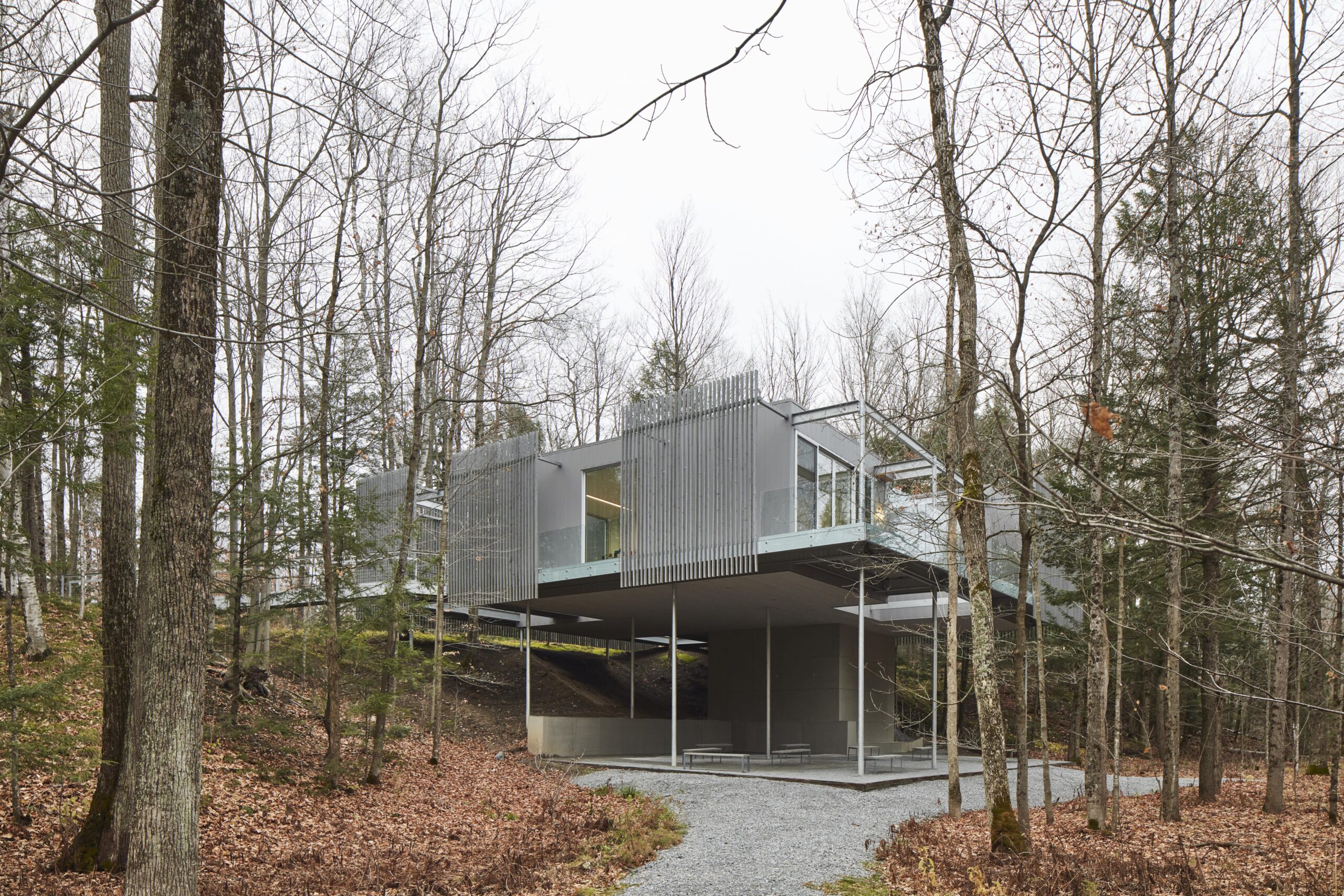
The noble Grantham Foundation. Photography by Maxime Brouillet; compliments of the architect.

The slender supporting beams at one side of the structure are one of the signature aspects of the Foundation Grantham build. Photography by Maxime Brouillet; compliments of the architect.
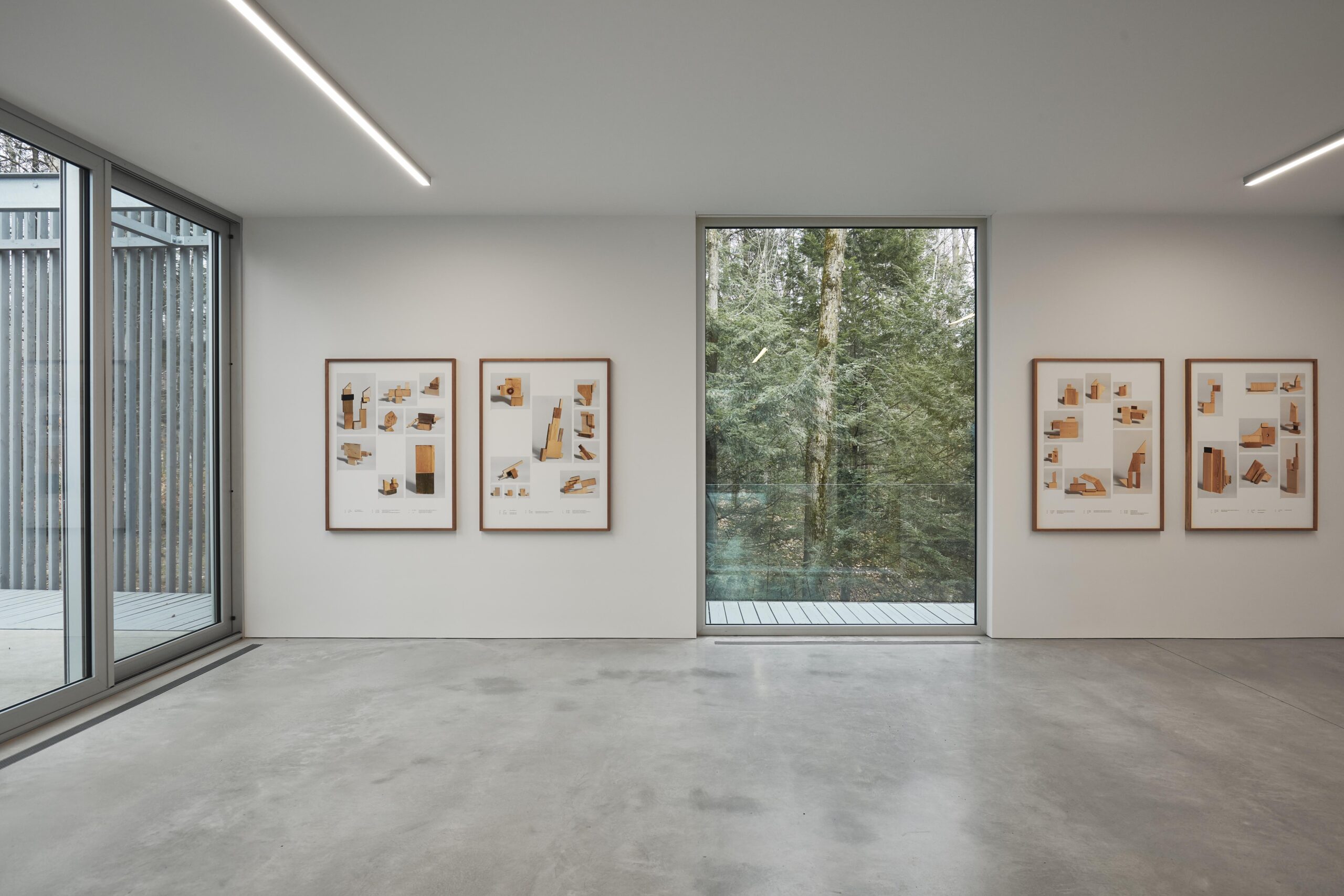
A minimalist place for contemplation amongst the woods. Photography by Maxime Brouillet; compliments of the architect.
The foundation’s mission is to support artistic productions and research that foster a greater sensitivity to the environment, and to promote these values through exhibitions, programming, and events. Its home is an elegant square structure perched on an uneven site, with one end supported on slender steel columns more than six metres into the air while the other side sits firmly at grade.
The building is surprisingly versatile. For several months of the year, it is used as a residence for a single artist, who is invited to work on their art in this secluded setting and later exhibit it in the gallery. It therefore includes foldaway furniture and a discreet kitchen that recedes when not in use. It can host events for over 150 guests and transition seamlessly from a gallery to a studio. Despite its being surrounded by thick forest on all sides, the architect still sought to bring nature into closer connection with the living spaces.
Floor-to-ceiling windows act as frames for the landscape, which feels lush during the hot and humid summers but has a much more barren ambiance in Quebec’s cold winters. The building’s surroundings are not just context for art, they are part of the experience of isolation and retreat the foundation seeks to offer.
Several voids in the structure create outdoor terraces for continuous indoor-outdoor living in warmer months. One of these is a hole in the floor slab that lets a tree grow through the building. On all four sides, a deck forms an “infinite path.” It is slightly off-axis from the rest of the structure, creating a path that successively widens or narrows at every turn.
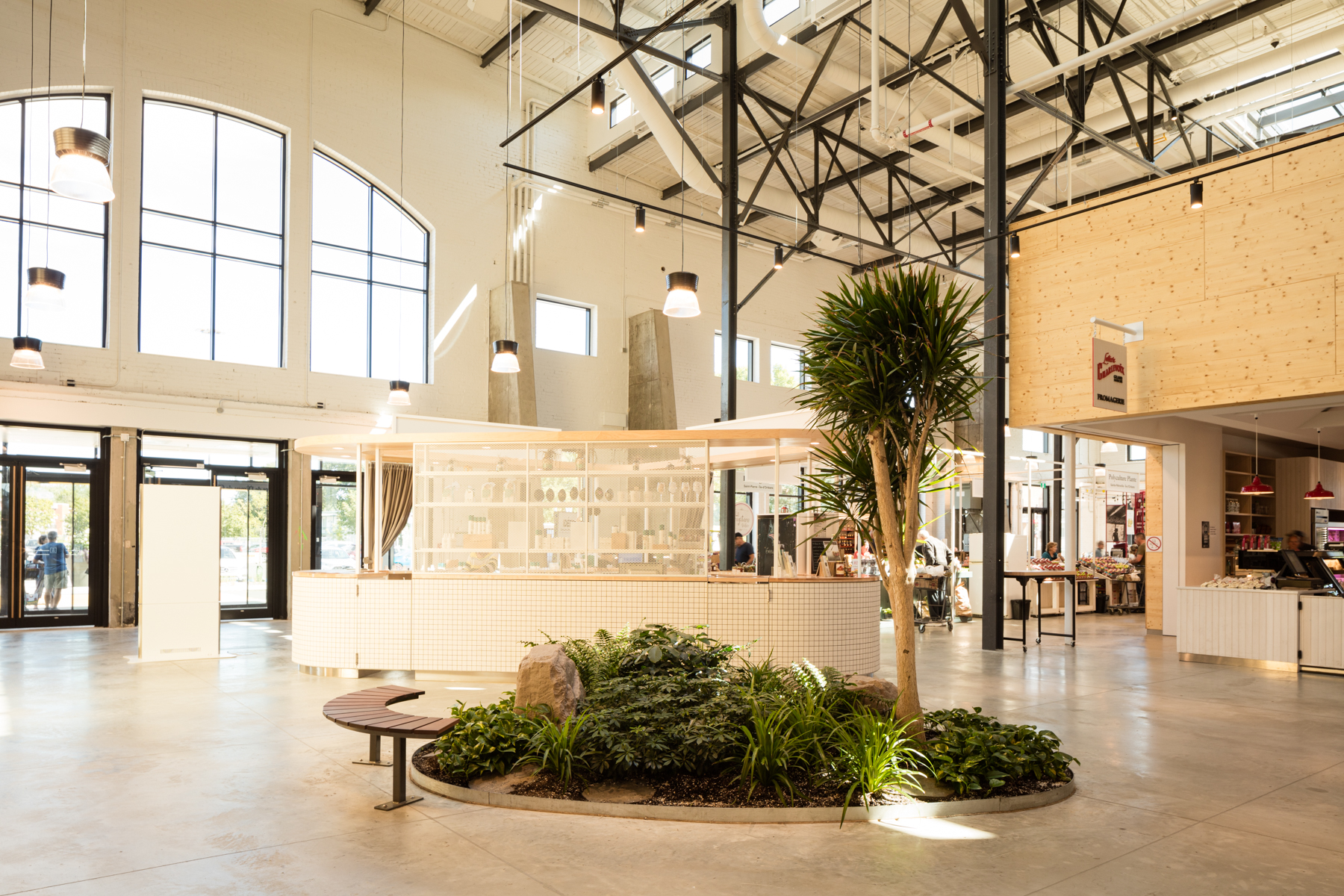
The Grand Market in Quebec City. Photography by Maxime Brouillet; compliments of the architect.
In addition to offering retreats for traditional visual artists, the Grantham Foundation will also welcome architects. “I think it’s really important to step outside the studio,” Pierre Thibault explains. “In today’s world, it’s essential to take a step back. Physical space, changing environments, has a lot of power for this. Stepping back stimulates creativity.”
This topic is central to Thibault’s practice, both professionally and as an educator. An avid painter and drawer, he often brings his studio or university pupils abroad. “Leaving Quebec gives me a renewed appreciation for what we have, and the way things are here,” he says. “You can go abroad and discover unbelievable things that you never would have expected. You can see the world as an outsider. It trains your eye to look at things more carefully. Coming back, you can turn this gaze on your own climate, your own seasons, your own cities. It’s very powerful.”
In addition to working with the Grantham Foundation, Thibault teases setting up his own: “My greatest creative moments occurred outside my daily life. Architects deserve these opportunities too.” He adds, “The creative process requires time, and space, and tranquility. Once you get into that mindset, you can work incredibly productively, just by changing your daily routine for some time. I’ve realized this in my own work, but I don’t want to take these opportunities just for myself. If I can, I want to try to give to others the chance to experience this.”
Although Atelier Pierre Thibault’s work has a distinctly residential focus, many of his recent projects have had a strong public tilt. His office has been investing time, energy, and resources in projects that benefit the public, even if they don’t directly contribute to his own firm’s growth.

Design for the Metis Installation.
The most obvious example of this is the Lab-École, a multipronged initiative that brought together Quebec’s Ministry of Education, civic leaders, celebrity chefs, and athletes to try and rethink the basic idea of an elementary school. The result was an open competition for commissions to design public schools in Gatineau, Maskinongé, Saguenay, Shefford, and Rimouski.
Atelier Pierre Thibault served as a competition judge, taking a step back to give other firms a greater opportunity to win the projects. As Thibault mentions, public design commissions in Quebec are typically awarded to a handful of firms with prior experience doing the same types of buildings, making it hard for new players to break through.
When I speak with Thibault, he is en route to Métis-sur-Mer, where his firm is participating in the Reford Gardens annual architectural installations festival. When I ask if there is a connection between this work and the Grantham Foundation, he chuckles. “The installation is a perfect square, like the verandah surrounding Grantham, just minus the house,” he explains. “I’m designing it like a platform for other artists to take up space. Painters, actors, musicians, whatever.”
This architect and public figure’s projects continue to define not only an aesthetic but also an ethical position on sharing. Space, ideas, art, and creativity take on a fuller meaning when they are shared, and it seems that with every new project, Pierre Thibault is reinforcing this point.
To see one of Thibault’s residential homes, click here.


